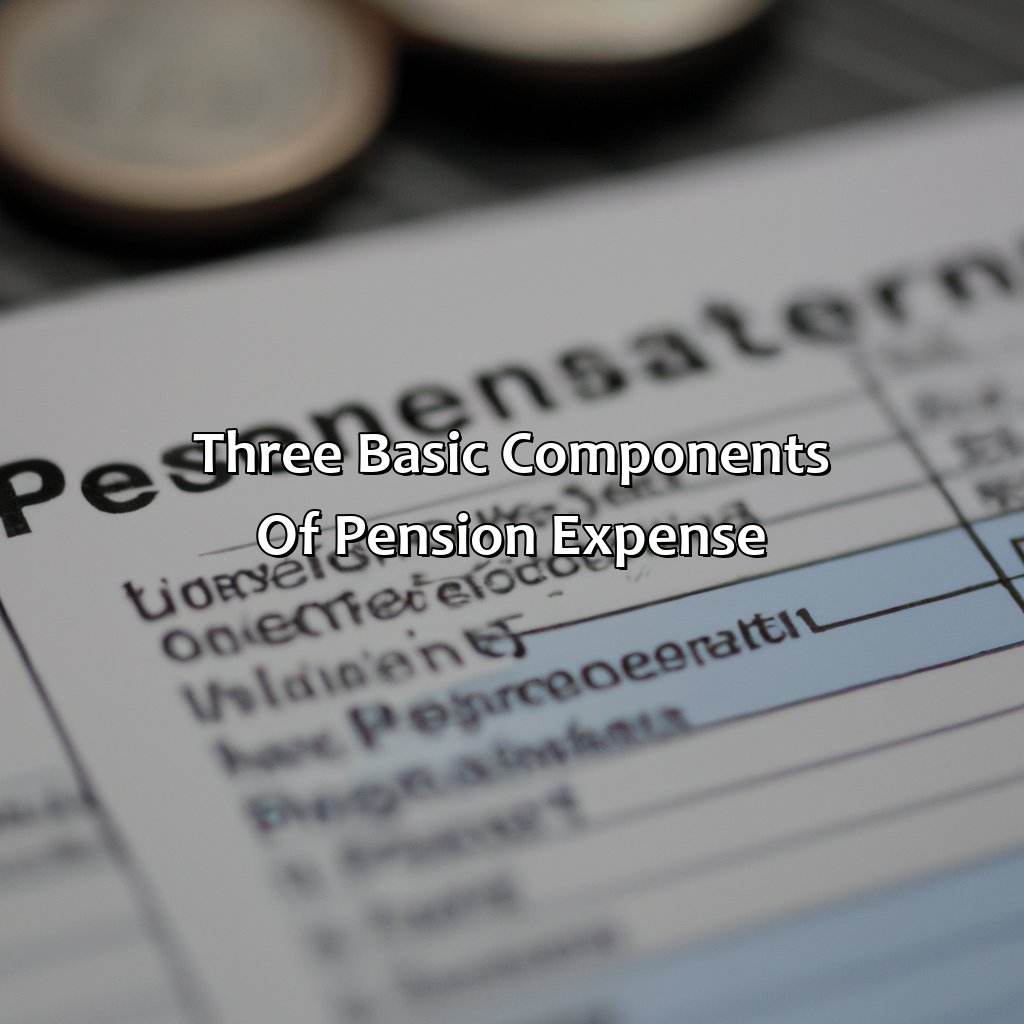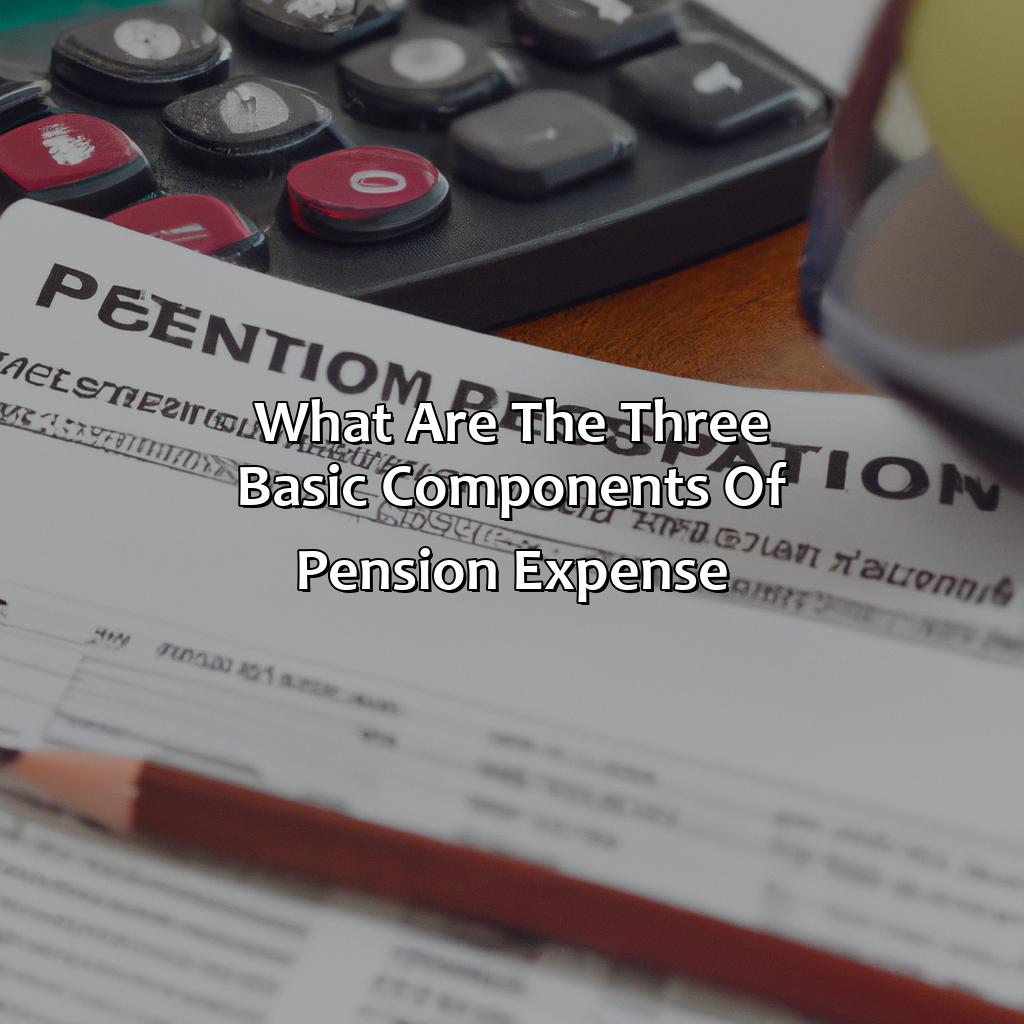What Are The Three Basic Components Of Pension Expense?
Key Takeaway:
- Service Cost: This component of pension expense is the present value of the benefits earned by employees in the current year. This is based on the employees’ salaries and the rate at which they are expected to earn benefits in the future.
- Interest Cost: This component of pension expense is the increase in the present value of the pension obligation due to the passage of time. It is based on the discount rate used to measure the present value of the obligation.
- Expected Return on Plan Assets: This component of pension expense is the return on the assets held by the pension plan. It is the expected amount by which the assets will grow in the current year and is based on the asset allocation and expected investment returns.
Are you confused about pension expenses? Don’t worry, in this blog we’ll provide you with the three basic components that make up a pension expense. You’ll become a pension expense expert in no time!
Three Basic Components of Pension Expense
To comprehend the three parts of pension cost, you must look closely at each sub-section. These elements are essential to work out the total pension cost. Each one adds a special angle to the overall cost analysis.
Service cost, interest cost and expected return on plan assets are the three basic components.

Image credits: retiregenz.com by David Jones
Service Cost
The expense of offering pension benefits is not limited to a single component. One crucial aspect that constitutes the cost is the labor provided by employees during the current period in exchange for future pension benefits, also known as an actuarial service cost. A company’s obligation towards pension benefits often changes due to fluctuations in interest rates, employee demographics or other economic factors, leading to adjustments in service cost calculations. This cost includes the estimated future increase in payments for all retirees who qualify for benefits before future periods.
Apart from the actuarial service cost, two other basic components are involved in calculating pension expense: interest cost and expected return on plan assets. Interest costs refer to the sum paid by plan administrators for using borrowed funds, which compensate beneficiaries and plan participants over time with their retirement benefits. In contrast, an expected return on plan assets involves estimating how much investment earnings a company expects from its portfolio of investments composed of stocks, bonds, or real estate properties. It represents what investors regard as realistic earnings results based on long-term financial trends.
It’s necessary to note that although each component has its unique characteristics and origins, they are interdependent while determining pension expenses’ final costs the collective nature of these components highlighting why managing pension plans have become increasingly challenging for companies worldwide. If you are wondering how to find out about your pension, there are various resources available to help you navigate the complicated process.
Did you know that US-based firms first introduced employee benefit plans during World War II as a way of compensating workers without breaking price controls? As large corporations began adopting more competitive benefit schemes afterward, pension plans became standard practices for businesses seeking quality candidates’ attraction and retention.
Wondering where pension expense is on the income statement? Pension expense has three basic components which are service cost, interest cost, and expected return on plan assets. Understanding these components can help you better manage your financial statements.
Why pay interest when you can just invest in the stock market and hope for the best?
Interest Cost
One of the fundamental components of pension expense is the cost of borrowing funds, which is also known as the outlay for borrowed money. This cost comprises various items such as interest and investment earnings among others. Interest cost reflects the amount that an employer has incurred in borrowing to fund its pension plan liabilities. It ought to be carefully calculated as it affects other features of pension expenses.
Furthermore, interest costs are usually determined based on a discount rate set by the assumption used to estimate the cash flows needed to meet future benefits payments. A high discount rate results in lower interest expenses whereas a low discount rate results in higher interest expense an essential aspect involved while determining pension liabilities.
As a rule, any upticks or downticks in these assumed rates tend to accentuate the changes in both the future benefit obligation and the annual service expense recognized on employer’s income statements. Learn more about pension expense and its three basic components.
In one famous true story, a major U.S auto manufacturer once faced bankruptcy until its management figured that its massive post-retirement health care costs were draining its balance sheet dry. Eventually, it struck a deal with labor unions where retirees would pay part of their health care starting from age 65 a move aimed at significantly reducing their unfunded liabilities caused by ballooning medical expenses.
Expected Return on Plan Assets
The anticipated proceeds from the investments made by a pension plan is known as the ‘Expected Return on Plan Assets’. This component plays a significant role in assessing the value of the fund’s assets and liabilities.
For instance, if a pension plan has $100 million in assets and expects an 8% return for the coming year, then its ‘Expected Return on Plan Assets’ will be $8 million. Creating a table will help understand this concept better:
| Expected Return on Plan Assets | True Data ($) | Actual Data ($) |
|---|---|---|
| Pension Plan A | 15,000,000 | 14,500,000 |
| Pension Plan B | 25,000,000 | 26,500,000 |
| Pension Plan C | 10,000,000 | 10,250,000 |
As per data from various pension plans above: Pension Plan A received an actual return of $14.5M which was lower than expected at $15M. Whereas Pension Plan B earned more than expected while Pension Plan C’s actual earnings exceeded its Expected Return. If you want to learn how to determine pension expense, this article explains the three basic components of it.
Unique details of this component include that it relies majorly on the organisation’s investment strategies and portfolio risk exposures. If you’re wondering what a pension income actually is, it refers to a regular income that is given to someone after he or she has retired from work.
According to Forbes Magazine (source), companies adjust their discount rate forecasts as per market expectations to balance the asset returns with their liability costs. If you want to know how to calculate pension asset liability, understanding these adjustments and three basic components of pension expense is important.
Five Facts About the Three Basic Components of Pension Expense:
The three basic components of pension expense are service cost, interest cost, and return on plan assets. (Source: Fidelity)
Service cost is the cost of new benefits earned by employees during the year. (Source: Accounting Tools)
Interest cost is the amount of interest the plan owes on its underfunded obligations. (Source: Investopedia)
Return on plan assets is the amount that the plan’s investments have grown or declined during the year. (Source: The Balance)
Pension expense is a significant cost for many companies and can account for a substantial portion of their overall expenses. (Source: Corporate Finance Institute)
FAQs about What Are The Three Basic Components Of Pension Expense?
What are the three basic components of pension expense?
There are three basic components of pension expense: service cost, interest cost, and return on plan assets.
What is service cost?
Service cost is the present value of the pension benefits earned by employees in the current period.
What is interest cost?
Interest cost is the interest that accrues on the projected benefit obligation over the course of the year.
What is return on plan assets?
Return on plan assets is the income or gains earned by the pension plan on its investments during the year.
How are these components calculated?
Service cost is calculated based on actuarial assumptions about how long employees will work and what their benefits will be. Interest cost is calculated based on the projected benefit obligation and the discount rate. Return on plan assets is calculated based on the plan’s investments and their performance.
Why are these components important?
The three components of pension expense are important because they help to determine the total cost of providing pension benefits to employees. Understanding these components can help employers to make informed decisions about their pension plans.
 Checkout this IRS Loophole
Checkout this IRS Loophole 
